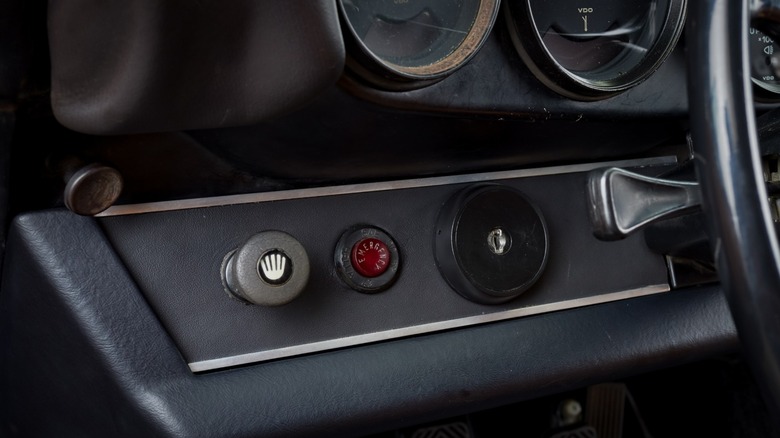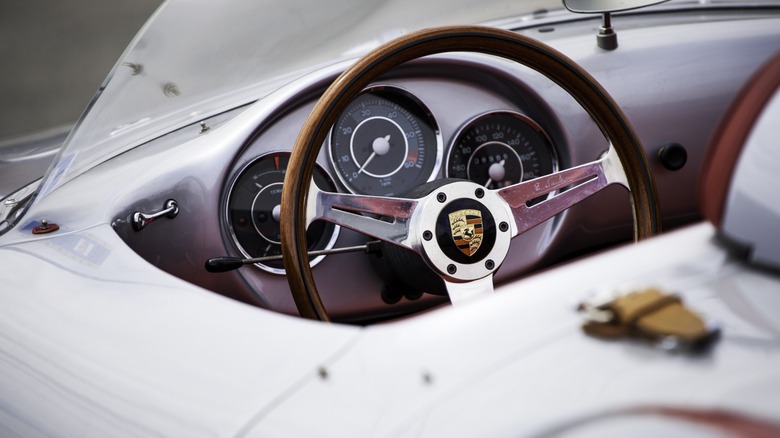Why Does Porsche Put The Ignition On The Left Side?
Imagine you're a 1960s race car driver at the 24 Hours of Le Mans. You're standing across the track from your car with a heart pounding from adrenaline and eyes locked on the French tricolor flag. The flag drops and you sprint across the track, dive into your Porsche, and quickly fasten the harness. You twist the ignition with your left hand and slam the car into gear with your right, taking off a split-second ahead of the pack. According to popular legend, Porsche places its ignition switches on the left as a clever hack to shave off time during the iconic Le Mans running start. And it's a great story, one that's been spread from Porsche dealers to race fans, collectors, and other enthusiasts.
This explanation ties beautifully into Porsche's motorsport legacy that includes 19 overall and 108 class wins at LeMans, but sadly has no basis in truth. Porsche's first overall win at LeMans came in 1970, the year the running start was scrapped. The year before, Jacky Ickx had protested against the practice by walking to his car; moments later a first-lap crash killed John Woolfe after he failed to buckle in or close his driver door completely. In truth, Porsche initially put ignition switches on the left to save money and resources as Germany struggled to rebuild its industrial infrastructure after World War II.
Electrical wire was in short supply in postwar Germany
Porsche's former museum curator Klaus Bischof told the Wall Street Journal in 2019 that Porsche's ignition switch placement was determined decades before the automaker became a force at LeMans. In 1948, when Ferry Porsche and his team were building the prototype model 356 in a converted sawmill in Gmünd, Austria, they were short on nearly every resource, including copper wire. Placing the ignition on the left helped the company save materials; a critical concern as Germany rebuilt its industrial capability after the war.
The production Porsche 356 lives on decades later as a timeless work of art, but ignition switch placement wasn't even consistent among the company's first models. Some early Porsches like the 1956 Porsche 356A had the switch mounted on the dashboard. The 1955 550 Spyder — one of the rarest Porsches ever made — had its ignition switch similarly placed just to the right of the wheel and instrument pod. But over the decades, what began as a practical decision hardened into tradition and became a part of the brand's identity; its origins aren't as important as the quirk's contribution to the high-end brand's rich legacy.

